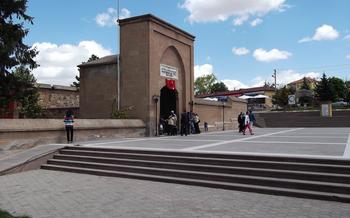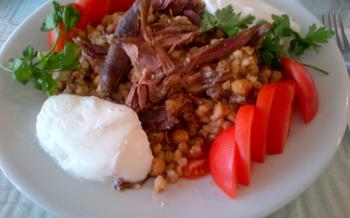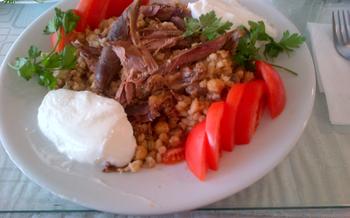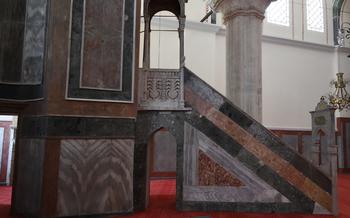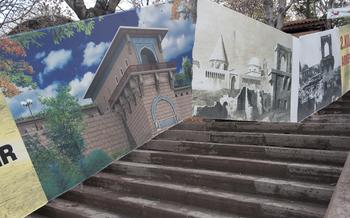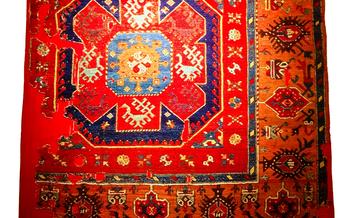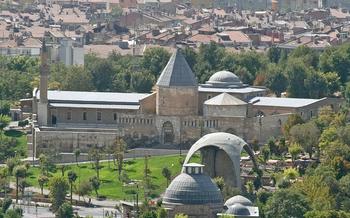
Tokat Mevlevihanesi
- Tokat Mevlevihanesi: A Hidden Gem in Anatolia
- Location and Accessibility
- Historical Background
- Architectural Marvel
- Semahane (Whirling Dervishes Hall)
- Dervish Cells and Living Quarters
- Museum Exhibits
- Mevlevi Music and Instruments
- Sufi Symbolism and Iconography
- Mevlana Rumi's Influence
- Cultural Events and Festivals
- Mevlevi Cuisine and Hospitality
- Nearby Attractions
- Insider Tip: Exploring Beyond the Mevlevihanesi
Tokat Mevlevihanesi: A Hidden Gem in Anatolia
A Journey Through History and Spirituality
Nestled in the heart of Tokat, a city brimming with historical treasures, lies the Tokat Mevlevihanesi, a sanctuary of spirituality and a testament to the rich cultural heritage of Turkey. Founded in the 13th century, this Mevlevi lodge played a pivotal role in the dissemination of Mevlevi teachings and Sufi practices throughout Anatolia. The Mevlevi Order, established by the revered Sufi mystic Mevlana Jalaluddin Rumi, emphasized love, tolerance, and the pursuit of spiritual enlightenment through music, dance, and poetry.
Architectural Masterpiece
The Tokat Mevlevihanesi stands as a testament to the architectural prowess of the Seljuk and Ottoman periods. Its courtyard, adorned with intricate carvings and elegant arches, leads visitors into a realm of serenity and contemplation. The mosque, with its soaring dome and vibrant tilework, invites worshippers to immerse themselves in prayer and reflection. The semahane, where the whirling dervishes performed their mesmerizing rituals, is a marvel of acoustics and design, creating an ethereal atmosphere that transports visitors to a higher plane of existence.
Sufi Rituals and Practices
The Mevlevi Order was renowned for its unique spiritual practices, including the semah, a ritual dance performed by whirling dervishes. This mesmerizing dance, accompanied by soulful music and rhythmic chanting, symbolized the dervishes' journey towards divine union. The Mevlevihanesi provided a sacred space for these rituals, fostering a deep connection between the dervishes and the divine.
Location and Accessibility
The Tokat Mevlevihanesi is nestled in the heart of Tokat, a city in the Central Anatolia region of Turkey. To reach this hidden gem, you can either take a direct flight to Tokat Airport (TJK) or arrive by bus or train from major cities like Ankara, Istanbul, or Sivas. Once in Tokat, the Mevlevihanesi is easily accessible on foot or by public transportation. The Mevlevihanesi is located in the old city center, surrounded by narrow cobblestone streets and traditional Ottoman-era houses. The best way to explore the city and reach the Mevlevihanesi is on foot, allowing you to soak in the historical atmosphere and admire the architectural wonders along the way. Guided tours are also available, providing insights into the history and significance of the Mevlevihanesi and Tokat's cultural heritage.
Historical Background
The Tokat Mevlevihanesi's origins can be traced back to the 13th century, when the Mevlevi Order, founded by the renowned Sufi mystic Mevlana Jalaluddin Rumi, established a presence in the city of Tokat. The Mevlevi Order played a significant role in the cultural and spiritual life of Tokat, contributing to its reputation as a center of learning and spirituality.
The Mevlevihanesi, or dervish lodge, served as a gathering place for dervishes, who devoted their lives to spiritual practices and the teachings of Mevlana Rumi. Within the Mevlevihanesi's walls, they engaged in Sufi rituals, including the sema, a ceremonial dance known as the whirling dervishes, which symbolized their spiritual journey towards divine union.
Over the centuries, the Tokat Mevlevihanesi became a renowned center for the study of Sufism and Mevlevi teachings. It attracted students and visitors from across the region, who sought guidance and enlightenment from the resident dervishes. The Mevlevihanesi also played a crucial role in preserving and transmitting Sufi traditions and practices, contributing to the rich cultural heritage of Tokat.
Architectural Marvel
The Tokat Mevlevihanesi stands as a testament to the architectural prowess of the Seljuk and Ottoman periods. Its unique style seamlessly blends elements from both eras, creating a harmonious and visually captivating structure.
The courtyard, the heart of the Mevlevihanesi, welcomes visitors with a serene ambiance. Surrounded by graceful arches and intricate stonework, it sets the stage for the spiritual journey that awaits within.
The mosque, a sanctuary of devotion, features a simple yet elegant design. Its graceful minaret rises skyward, calling the faithful to prayer. The interior, adorned with delicate tilework and calligraphy, exudes a sense of tranquility and reverence.
The semahane, the hall where the whirling dervishes perform their sacred ritual, is a masterpiece of architectural acoustics. Its domed ceiling and carefully designed walls create an environment that amplifies the rhythmic sounds of the ney and kudüm, transporting participants to a higher realm of consciousness.
Beyond these main structures, the Mevlevihanesi is adorned with a myriad of smaller chambers, each serving a specific purpose. From the dervish cells, where the seekers of truth found solace and contemplation, to the communal spaces where they gathered for meals and fellowship, every corner of the Mevlevihanesi tells a story of devotion, discipline, and spiritual growth.
Semahane (Whirling Dervishes Hall)
The semahane, or whirling dervishes hall, is the heart of the Tokat Mevlevihanesi. It is here that the Mevlevi dervishes performed the sema, a ritualized dance that is a central part of their spiritual practice. The semahane is a large, open room with a high ceiling. The floor is covered with a thick carpet, and the walls are decorated with intricate carvings and paintings.
The sema is a beautiful and mesmerizing sight. The dervishes wear long, white robes and tall, conical hats. They move in a slow, circular motion, their arms outstretched. The sema is said to represent the journey of the soul to God. As the dervishes whirl, they let go of their egos and become one with the divine.
The semahane is a powerful and moving experience. It is a reminder of the beauty and diversity of the world's religions. It is also a reminder of the power of the human spirit.
Dervish Cells and Living Quarters
Step into the private world of the Mevlevi dervishes as you explore the cells and living quarters within the Tokat Mevlevihanesi. These simple yet serene spaces offer a glimpse into the daily life and practices of these spiritual seekers.
The cells, where the dervishes resided, are small and sparsely furnished, reflecting their commitment to asceticism. Each cell typically contains a simple bed, a prayer rug, and a few personal belongings, emphasizing the importance of detachment from worldly possessions.
The communal spaces, on the other hand, showcase the dervishes' sense of brotherhood and unity. The dining hall, where they shared meals, fosters a spirit of togetherness and equality. The kitchen, with its traditional cooking utensils, provides insights into the simple yet nutritious diet of the dervishes.
Anecdotes and stories abound, adding a human touch to the history of the Mevlevi Order. Tales of dervishes engaging in spiritual practices, seeking guidance from their mentors, and finding solace in their community bring the Mevlevihanesi to life.
Museum Exhibits
Housed within the Tokat Mevlevihanesi is a captivating museum that preserves and showcases the rich heritage of the Mevlevi Order. As you step through its doors, you'll be greeted by a diverse collection of artifacts, manuscripts, and relics that offer a glimpse into the spiritual and cultural world of the Mevlevi dervishes.
Among the highlights of the museum's collection are exquisite examples of Mevlevi calligraphy, intricate manuscripts adorned with illuminated artwork, and musical instruments that once resonated with the melodies of Sufi devotion. You'll find beautifully crafted ney flutes, kudüm drums, and rebab lutes, each holding a special place in the Mevlevi musical tradition.
Through these exhibits, the museum provides a deeper understanding of the Mevlevi Order's history, rituals, and practices. Visitors can explore the evolution of Mevlevi music, learn about the significance of specific instruments, and gain insights into the role of music in Mevlevi ceremonies.
The Tokat Mevlevihanesi Museum stands as a testament to the enduring legacy of the Mevlevi Order and offers a unique opportunity to delve into the mystical world of Sufism. Whether you're a history buff, a music enthusiast, or simply someone seeking spiritual enlightenment, this museum is sure to captivate and inspire.
Mevlevi Music and Instruments
Mevlevi music holds a significant place in the cultural and spiritual traditions of the Mevlevi Order. Rooted in the teachings of Mevlana Rumi, this unique genre of music serves as a means of expressing devotion, transcending earthly desires, and connecting with the divine. Mevlevi music is characterized by its meditative melodies, rhythmic patterns, and the use of traditional instruments.
Among the key instruments associated with Mevlevi music are the ney, kudüm, and rebab. The ney, a long, end-blown flute, is renowned for its haunting and soulful sound. Its plaintive notes evoke a sense of longing and spiritual yearning. The kudüm, a goblet-shaped drum, provides a rhythmic foundation for the music, marking the tempo and accenting the melodies. The rebab, a stringed instrument with a distinctive rounded body, adds a melodic layer to the ensemble. Its plaintive strings create a rich and resonant sound that blends harmoniously with the ney and kudüm.
In Mevlevi ceremonies, music plays a crucial role in facilitating the semah ritual. The semah, or whirling dance, is a symbolic representation of the dervishes' journey towards spiritual perfection. As the dervishes whirl, accompanied by the enchanting melodies of Mevlevi music, they seek to transcend their egos and attain a state of unity with the divine.
Sufi Symbolism and Iconography
The Mevlevi Order, deeply rooted in Sufism, incorporates a rich symbolism that transcends mere aesthetics. These symbols, embedded in the architecture, decor, and rituals of the Tokat Mevlevihanesi, hold profound spiritual and mystical meanings for its practitioners.
One prominent symbol is the rose, representing the heart's unfolding and the journey towards divine love. The circle, symbolizing unity and perfection, is often depicted in architectural elements like arches and domes. The crescent moon, associated with the Prophet Muhammad, signifies spiritual enlightenment and guidance.
The hand, often depicted in various gestures, conveys different meanings. The open hand represents generosity and receptivity, while the closed hand symbolizes protection and inner strength. The fish, a symbol of abundance and fertility, is found in decorative motifs throughout the Mevlevihanesi.
These symbols, deeply intertwined with Mevlevi spirituality, provide a glimpse into the inner workings of the Sufi heart and mind. Understanding their significance enhances the visitor's appreciation of the Mevlevihanesi's sacred spaces and the profound spiritual journey they represent.
Mevlana Rumi's Influence
The Tokat Mevlevihanesi is closely associated with the renowned Sufi poet and mystic Mevlana Rumi. Rumi, whose teachings and philosophy had a profound impact on the Mevlevi Order, is revered as one of the greatest spiritual figures in Islamic history. The Mevlevi dervishes of Tokat were deeply influenced by Rumi's teachings, and his writings and poetry played a central role in their spiritual practices and rituals.
One of the most famous anecdotes related to Rumi's connection to the Tokat Mevlevihanesi involves a visit he made to the city in the 13th century. During his stay, Rumi is said to have been deeply moved by the beauty of the Mevlevihanesi and the sincerity of the dervishes. He spent several days in Tokat, engaging in spiritual discussions and exchanging ideas with the Mevlevi community. This encounter is believed to have had a lasting impact on Rumi's own spiritual development and his understanding of the Mevlevi path.
Cultural Events and Festivals
The Tokat Mevlevihanesi is not just a historical site but also a vibrant cultural hub that hosts various events and festivals throughout the year. These events provide a unique opportunity to experience the living traditions of the Mevlevi Order and immerse yourself in the rich cultural heritage of Tokat.
One of the highlights is the annual Mevlana Rumi Commemoration Ceremony, held in December to honor the renowned Sufi poet and founder of the Mevlevi Order. This ceremony features recitations from Rumi's works, performances of Mevlevi music, and the iconic whirling dervish ritual.
Another significant event is the Hıdırellez Festival, celebrated on May 6th. This ancient festival marks the arrival of spring and is associated with fertility and renewal. During the festival, locals gather at the Mevlevihanesi to participate in traditional rituals, enjoy live music and dance performances, and savor delicious local cuisine.
If you plan to visit the Tokat Mevlevihanesi, be sure to check the event calendar to coincide your visit with one of these special occasions. It's an unforgettable opportunity to witness the vibrant cultural traditions of Anatolia and gain a deeper understanding of the Mevlevi Order's spiritual legacy.
Mevlevi Cuisine and Hospitality
The Mevlevi Order placed great importance on hospitality and generosity, extending warm welcomes to visitors and travelers alike. Their cuisine, influenced by both Turkish and Sufi traditions, reflected this spirit of hospitality and became an integral part of the Mevlevi experience.
Traditional Mevlevi dishes were often simple yet nourishing, prepared with fresh, seasonal ingredients. Lentil soup, bulgur pilaf, and various stews were common staples, accompanied by freshly baked bread. Dairy products like yogurt and cheese held a special place in the Mevlevi diet, symbolizing purity and abundance.
Beyond food, the Mevlevi Order emphasized the importance of manners and etiquette during meals. Dervishes were expected to exhibit gratitude, humility, and consideration for their fellow diners. Sharing food and engaging in meaningful conversation were seen as opportunities for spiritual growth and connection.
One of the highlights of Mevlevi hospitality was the sema ceremony, where whirling dervishes performed their sacred dance. During these ceremonies, guests were often invited to partake in a special meal known as the "sikke," a symbol of unity and brotherhood. The sikke consisted of a simple dish of rice or bulgur, shared among all present as a reminder of their common humanity.
The Mevlevi tradition of hospitality continues to this day, with many dervish lodges and cultural centers offering visitors a taste of their unique cuisine. Whether you're a history buff, a foodie, or simply someone seeking a deeper cultural experience, exploring the culinary traditions of the Mevlevi Order is a delightful and rewarding way to immerse yourself in the rich heritage of Turkey.
Nearby Attractions
The Tokat Mevlevihanesi is nestled in a historic neighborhood replete with captivating historical sites and natural wonders. Just a short stroll away, visitors can marvel at the grandeur of the Tokat Castle, a formidable fortress that has stood resiliently for centuries. Its imposing ramparts and well-preserved structures offer a glimpse into the city's rich past as a strategic military stronghold.
History buffs will delight in exploring the 18th-century Tokat Clock Tower, an iconic landmark that has become synonymous with the city. Its intricate carvings and intricate clock mechanism stand as a testament to the craftsmanship and ingenuity of the era.
Nature enthusiasts can seek respite in the tranquil Pazarbolu Canyon, located just a short drive from the Mevlevihanesi. This enchanting natural paradise boasts stunning waterfalls, lush greenery, and a serene ambiance perfect for escaping the hustle and bustle of city life.
For those seeking a more immersive cultural experience, the Tokat Museum offers a fascinating journey through the city's history and cultural heritage. Its collection of artifacts, including ancient manuscripts, traditional costumes, and archaeological finds, provides a deeper understanding of the region's diverse past.
These nearby attractions, when combined with the Tokat Mevlevihanesi, create a comprehensive itinerary that caters to diverse interests, ensuring a truly enriching and memorable visit to this captivating city.
Insider Tip: Exploring Beyond the Mevlevihanesi
While the Tokat Mevlevihanesi is undoubtedly a highlight, don't miss the opportunity to explore the surrounding historical neighborhoods of Tokat and delve deeper into its rich cultural tapestry. Wander through the narrow cobblestone streets, admiring the traditional Ottoman-style houses with their intricate woodwork and colorful facades. Discover hidden courtyards and charming cafes tucked away in unexpected corners, where you can savor authentic Turkish coffee and delectable local sweets.
Engage with the friendly locals, who are always eager to share stories and anecdotes about their city and its heritage. Visit the nearby Tokat Museum to learn about the region's fascinating history and admire displays of archaeological artifacts and ethnographic exhibits. Take advantage of the opportunity to shop for unique souvenirs at the local bazaar, where you can find an array of traditional crafts and handicrafts, including carpets, pottery, and intricate metalwork.
Indulge in the flavors of Tokat's cuisine by trying local delicacies such as keşkek, a hearty dish made from wheat, meat, and yogurt, or the famous Tokat kebab, known for its succulent lamb and aromatic spices. Don't forget to sample the refreshing local fruit juices and sherbets, perfect for a hot summer day.
Exploring beyond the Mevlevihanesi will give you a deeper understanding of Tokat's vibrant culture and warm hospitality. Embrace the chance to connect with the locals, savor the local cuisine, and uncover the hidden gems that make this city so special.

